The Story Behind Predator
The original inter-planetary rumble in the jungle
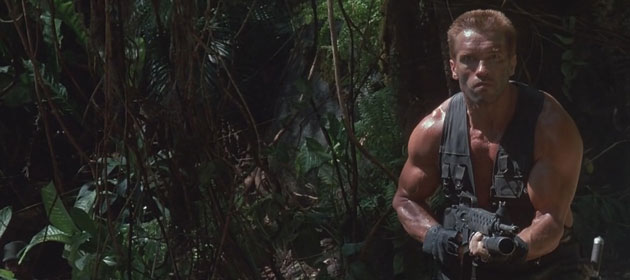
Humble beginnings...
1983. Two brothers, Jim and John Thomas, are sitting on a Californian beach, bashing out their debut script. “We’d just stick an umbrella out there and just work,” recalls Jim.
At the time, living nearby was Ernest Thompson, the playwright who, the previous year, had won an Oscar for his own debut script, On Golden Pond .
Locked away in his “ivory-tower condominium”, every day he’d look down and glimpse these upstarts scribbling away in the sun.
“He finally couldn’t stand it,” laughs Jim. “He came and told us how jealous he was!”
While Thompson envied their makeshift beachside office, it was lucky he didn’t glance over their shoulders to read what they’d written: a pulsating script that would launch a franchise and introduce the world to one of the great alien creations.
Predator, as it eventually became known, was about to have its moment in the sun.
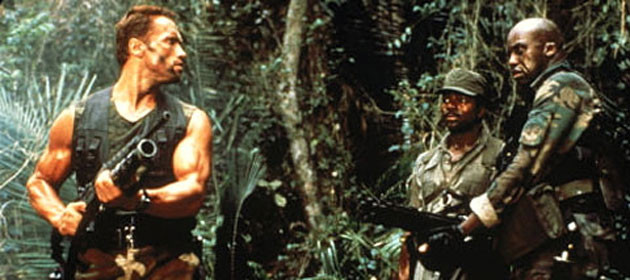
The story takes shape
“We had an idea about doing a story about a brotherhood of hunters who came from another planet to hunt all kinds of things,” says Jim. They swiftly realised it wouldn’t work.
“So we picked one hunter who was going to hunt the most dangerous species – man.”
In this case, the most dangerous man on earth – the combat soldier – armed with the most sophisticated weaponry available.
Set in the jungles of Guatemala, Predator begins as an elite team of US soldiers are dispatched to find a missing “civilian” chopper crew.
At it turns out, the vehicle was on a military sweep for rebel guerrillas, whom the CIA want scorched from existence.
While the shooting script made references to the soldiers’ past missions in Libya and Afghanistan (very topical right now), the Thomas brothers recall that in an early draft, team leader Dutch recalled an “embassy takeover” he’d once been involved in.
Released in 1987, the same year Oliver Stone’s Platoon won Best Picture, Predator tapped into the right-wing driven craze for military movies, only to bend the genre right out of shape as the team gradually get picked off by the Predator .
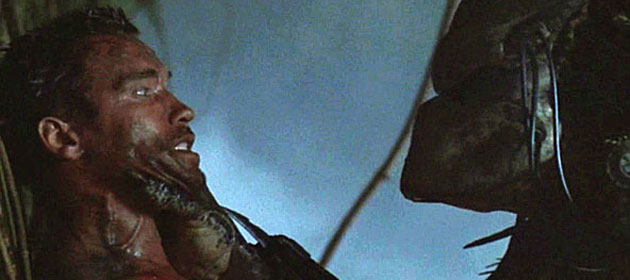
A Predator is born
“The creature was descended from a long line of a warrior society,” says John.
“Obviously, he wasn’t a game hunter. He was in this for trophies. It has the same implications for his kind and his society as it does on our world. We were trying to convey that it had high meaning for him.”
Indeed, as the creature cleans and strokes the skulls of those it kills, it’s clearly more than just sport.
The Thomas brothers decided to create an alien that innately understood how to hunt, lure and trap.
Stalking (using heat-sensitive vision), camouflage (via an invisibility cloak) and mimicking the call of its prey were the order of the day.
Conveyed using sound loops and synthesised noises, the creature repeats back what it hears – most poignantly in the finale when Dutch asks, “What the hell are you?” and the Predator utters the same statement, with the emphasis on you.
An uncanny use of sound design in the film, it was just one of the many innovations that made Predator far more than just Aliens in the jungle.
Originally called Hunter, inspirations ranged from Joseph Conrad’s jungle-set classic novella Heart Of Darkness to stories by the Brothers Grimm read to Jim and John by their parents when they were young.
The brothers also plundered their knowledge of creatures from classical literature. “We’ve always had an interest in mythology,” adds Jim.
“There’ve always been creatures like the Predator. There’s the Cyclops, the Minotaur, Goliath, the Grendel in Beowulf. They always represent the darkness.”
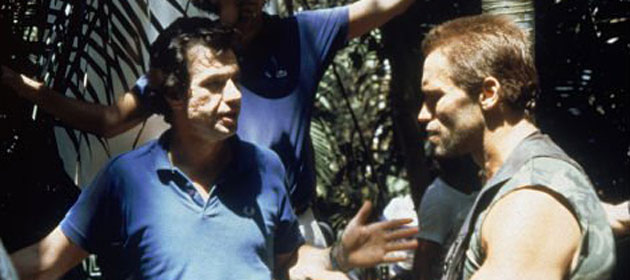
Selling the story
Finished in September 1983, the brothers started to shop the script around Hollywood. But without an agent, they couldn’t get it read.
So they resorted to slipping it under the door of Twentieth Century Fox employee Michael Levy.
With not a credit to his name – he would go on to executive produce Die Hard 2 and Predator 2 – he passed it on to his colleagues.
Lawrence Gordon, the veteran action producer who was in the midst of his two-year tenure as President of Fox, read the script in early 1984 and snapped it up faster than you could fire an M16.
With Gordon assigning underling John Davis to the project, it was the fledgling producer who was responsible for hiring John McTiernan as director.
“We needed a fresh voice,” says Davis, who had seen an early cut of McTiernan’s debut feature Nomads, an evil-spirits tale starring Pierce Brosnan and, er, Adam Ant.
“I was very happy when they offered it to me,” says McTiernan.
“I’d always dreamed of doing an old-fashioned adventure movie, and Predator was clearly designed to be pure entertainment.”
For McTiernan, the Thomas brothers’ script contained everything he needed to assemble such a ride.
“It combined elements you rarely find together: a classic hero story and a horror story, like the Norse myths, where heroes fight against supernatural beings,” he says.
“It also reminded me of the old war movies and comic books with men who were larger than life. It is in essence a battle of the titans.”
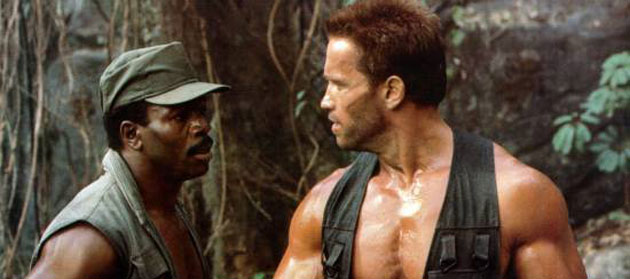
Predator meets his match...
Aside from Davis, Gordon made one other major appointment. He brought in Joel Silver, whom he’d given his start to on Walter Hill’s 1979 thriller The Warriors .
After working together on two more Hill films, 48 Hrs and Streets Of Fire , Silver had branched out on his own to make Commando with a certain Austrian bodybuilder.
With previous military experience, having served a year in the Austrian army back in 1965, Arnold Schwarzenegger fell for Predator as soon as it was sent to him.
The only thing that delayed him – and the shoot, until April 1986 – were a raft of prior commitments.
“I always wanted to do a film like The Wild Bunch or The Magnificent Seven, something like that, where a team of guys work together, rather than relying on yourself,” says Schwarzenegger, who was cast as Dutch.
“It’s much more realistic. But each one of those guys are very powerful guys. They’re not only great actors, but they’re physically strong and very experienced. They’re equals of mine.”
Symbolised in the film’s opening moments when he and co-star Carl Weathers (who plays CIA drone Dillon) engage in a bicep-bulging, dick-measuring handshake, Schwarzenegger recognised this feeling.
“It took me back to my bodybuilding days, where you work with a bunch of guys and there is a certain camaraderie that develops.”
Weathers, a former pro-football athlete who had risen to fame as rival boxer Apollo Creed in the Rocky franchise, was one of the few actors cast without military experience.
Given the production was about to dump its cast and crew in the Mexican jungle for three months, casting director Jackie Burch wisely realised that he needed to recruit as many veterans as possible.
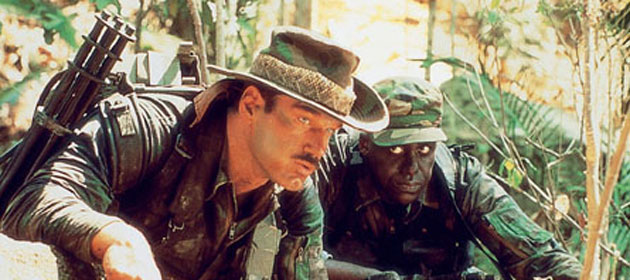
Putting together a team...
The first was ex-Navy SEAL Jesse Ventura, a former wrestling pro who went by the nickname ‘The Body’ long before Elle Macpherson.
Making his film debut, he was cast as Blain, “a 250lb killer who chews tobacco”.
Then there was Richard Chaves, a Vietnam veteran who had served in the 101st US Airborne and was cast as Poncho, the agile point-man of the unit.
Reading the script, Chaves was instantly reminded of “the actual jungle experiences I had in Vietnam”.
\William ‘Sonny’ Landham, playing American-Indian tracker Billy, was the fourth cast member with military experience.
A former adult-movie star, Landham was undeniably the wild card. Hired by Silver, who had worked with him on 48 Hrs and The Warriors , he was such a loose cannon that the insurance company wouldn’t even let him on set unless the production hired a bodyguard to escort him.
“The bodyguard was not to protect Sonny,” laughs McTiernan. “The bodyguard was to protect other people from Sonny!
"So we had this 6ft, 8in-tall giant, who just had to follow Sonny all day, the entire time he worked on the movie, and make sure that he never misbehaved.”
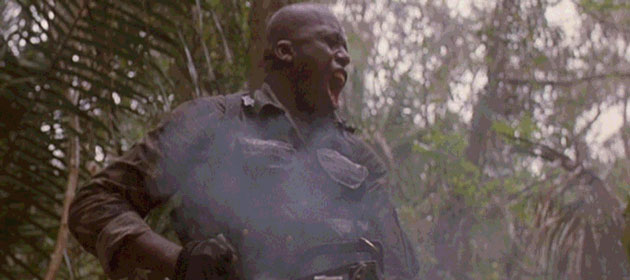
Basic training
Arguably, he was probably too exhausted to muck around. After six weeks of physical prep in Los Angeles, the actors were brought to Puerto Vallarta, on Mexico’s Pacific Coast, to step up their training.
“We’d get up at 6am for breakfast and then run four or five miles to get into condition,” recalls Schwarzenegger. “After that we worked five or six hours in the jungle on skills training – everything from climbing trees to rappelling down ropes to handling weapons.
"We had to learn how to move silently through the jungle and communicate with hand signals. Then we went back to the weights room in the hotel and trained for two hours, and then John called us and said, ‘OK, now we rehearse!’”
For a film bursting at the seams with testosterone, two budding directors lay in their midst. The first was Bill Duke – cast as knife wielding expert Mac – who had already garnered considerable experience shooting episodes of Falcon Crest, Dallas and Hill Street Blues.
If Duke’s inclusion made total sense – he had, after all, appeared opposite Schwarzenegger in Commando – the other was a little stranger.
Enter Pittsburgh native Shane Black, still years away from heading behind the camera with Kiss Kiss Bang Bang .
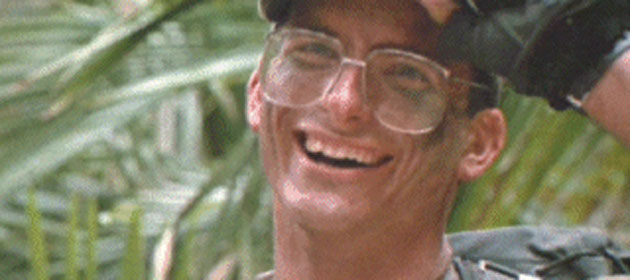
Bet on Black
Back then, his debut script, Lethal Weapon , was in production, with Silver pulling the strings.
“Joel had asked me, ‘Do you want to do a draft of Predator? The studio is scrambling and they want to get a different version,’” recalls Black.
“I didn’t want to but he said, ‘Come down to Mexico anyway and we’ll put you in the movie.’”
As Davis remembers, “The idea was hatched, ‘We’ll hire him as an actor.’ And when he’s there stuck in Mexico, we’ll give him the script and make him rewrite it.”
In the end, Black was cast as Hawkins, the bespectacled soldier who becomes the first luckless victim of the Predator.
Not exactly built for combat, “it was pretty miserable” he says of the training. McTiernan remembers it differently: “In about four or five days, even Shane started looking like a killer.”
Black did little to the script, which David Peoples (fresh off Blade Runner) had already taken a pass at. His biggest contribution was the two “pussy” gags that Hawkins tells, added to make his character memorable.
“It was mostly me sitting with Joel Silver over some tequila telling jokes,” says Black.
“I think the Thomas brothers, who wrote the script… I really think they hate those jokes. I don’t think they like them at all.”
Other changes to the script were more practical, not least the final face-off between Dutch and the Predator.
Originally intended to be in front of the creature’s spacecraft (glimpsed briefly in space during the opening credits), it was cut due to time and money. Yet there were bigger problems to tackle.
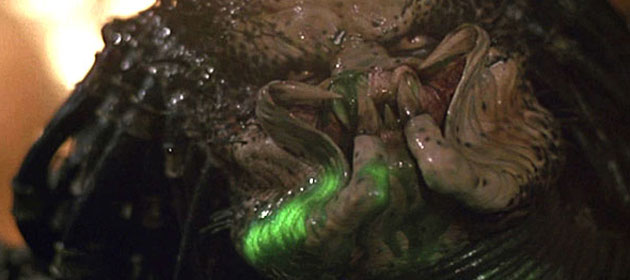
Monster magic
An American Werewolf In London effects guru Rick Baker was considered, but eventually Stan Winston was hired to (re)create the Predator.
Fresh off an Oscar win for his work on James Cameron’s Aliens , he happened to be sitting next to the director on a plane heading for Japan when he started work on the design.
“I was sketching concepts for the Predator. And Jim Cameron looked over to me and said, ‘You know, I always wanted to see something with mandibles.’”
Hastily, Winston etched in the moveable pincer-like appendages on the Predator – terrifyingly designed to fold and flare out (prompting Schwarzenegger to utter the film’s classic line: “You’re one ugly motherfucker!”).
Wanting to utilise a more naturalistic, humanoid appearance – not least due to the creature’s Rastafarian-style dreadlocks – Winston decked his creation in high-tech armour that even housed a pop-up medical kit and self-destruct detonator.
It made for an “unusual look”, as FX technician Shane Mahan put it: “The creature is very cultural-looking, a mix between a Spartan and an African warrior.”
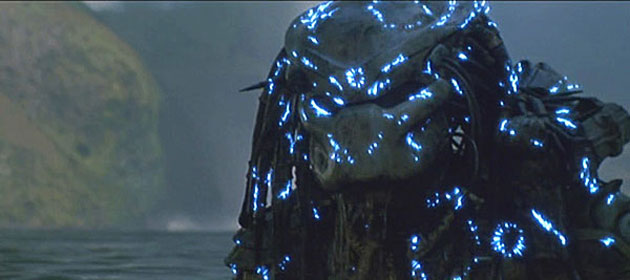
Birth of a franchise...
What makes Predator so successful is how gradually McTiernan and the Thomas brothers reveal their creature – from his heat-vision POV to his shimmering invisibility cloak to the sight of him in full body-armour to the final pay-off, where he removes his helmet.
Emphasising suspense more than action, it partially explains why the 1990 LA-set sequel Predator 2 flopped – the surprise element that McTiernan played on was long gone.
But when the original was released in the summer of 1987, audiences flocked to see it, with the film grossing $60m at the box office (twice the sequel’s tally, which at $35m also cost double what Predator did to make).
Most critics dismissed it as just another brainless Arnie action movie. “It’s arguably one of the emptiest, feeblest, most derivative scripts ever made,” sneered the Los Angeles Times.
Understandable really, with scenes such as “the mowdown”, as the crew called it, when Mac unleashes Blain’s Gatling gun (the beautifully named Ol’ Painless) into the jungle in the vain hope of shooting the Predator.
But via comics, video games and spin-off movies like Alien Vs Predator , the Thomas brothers’ trophy hunter is still very much alive.
“We had no idea that the film would be so well remembered,” exclaims Black. “You still see Predator t-shirts!"
The Total Film team are made up of the finest minds in all of film journalism. They are: Editor Jane Crowther, Deputy Editor Matt Maytum, Reviews Ed Matthew Leyland, News Editor Jordan Farley, and Online Editor Emily Murray. Expect exclusive news, reviews, features, and more from the team behind the smarter movie magazine.


